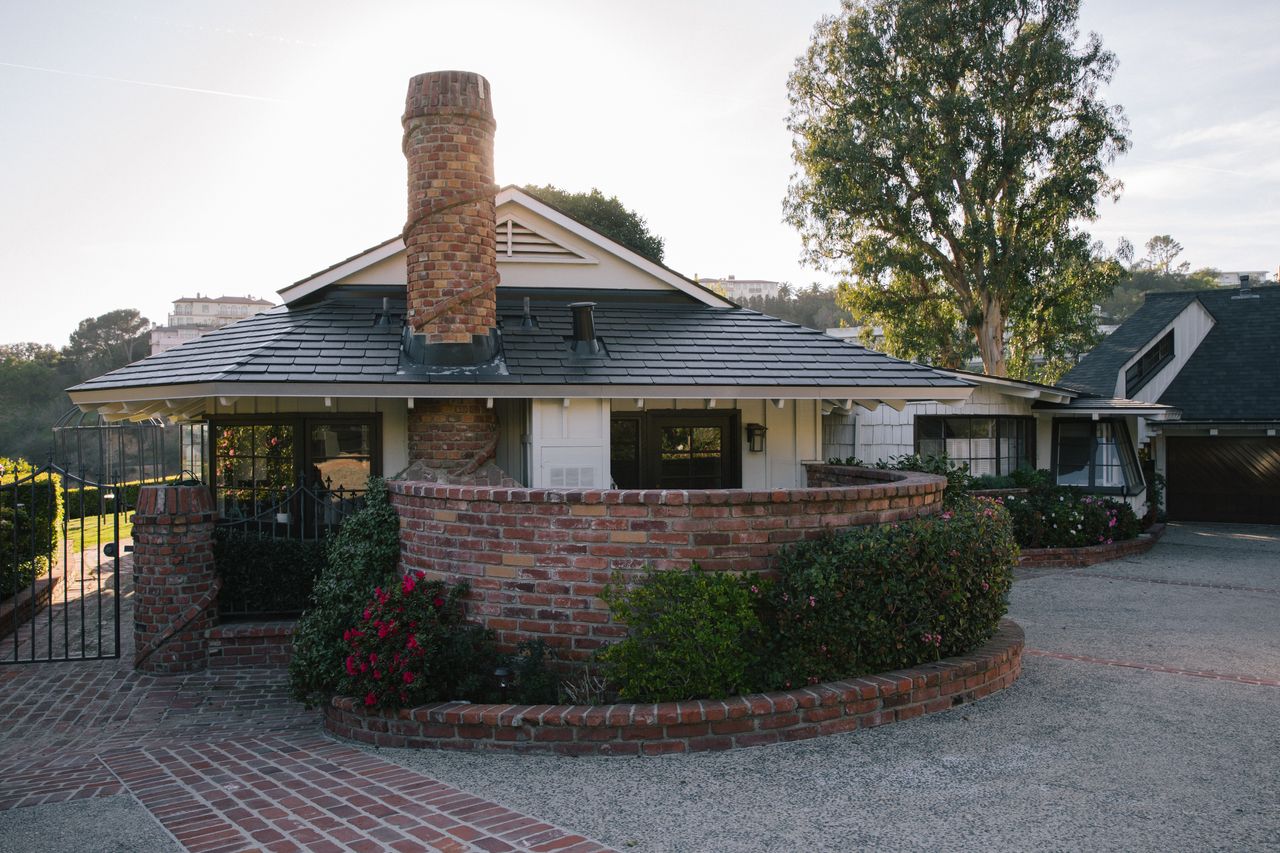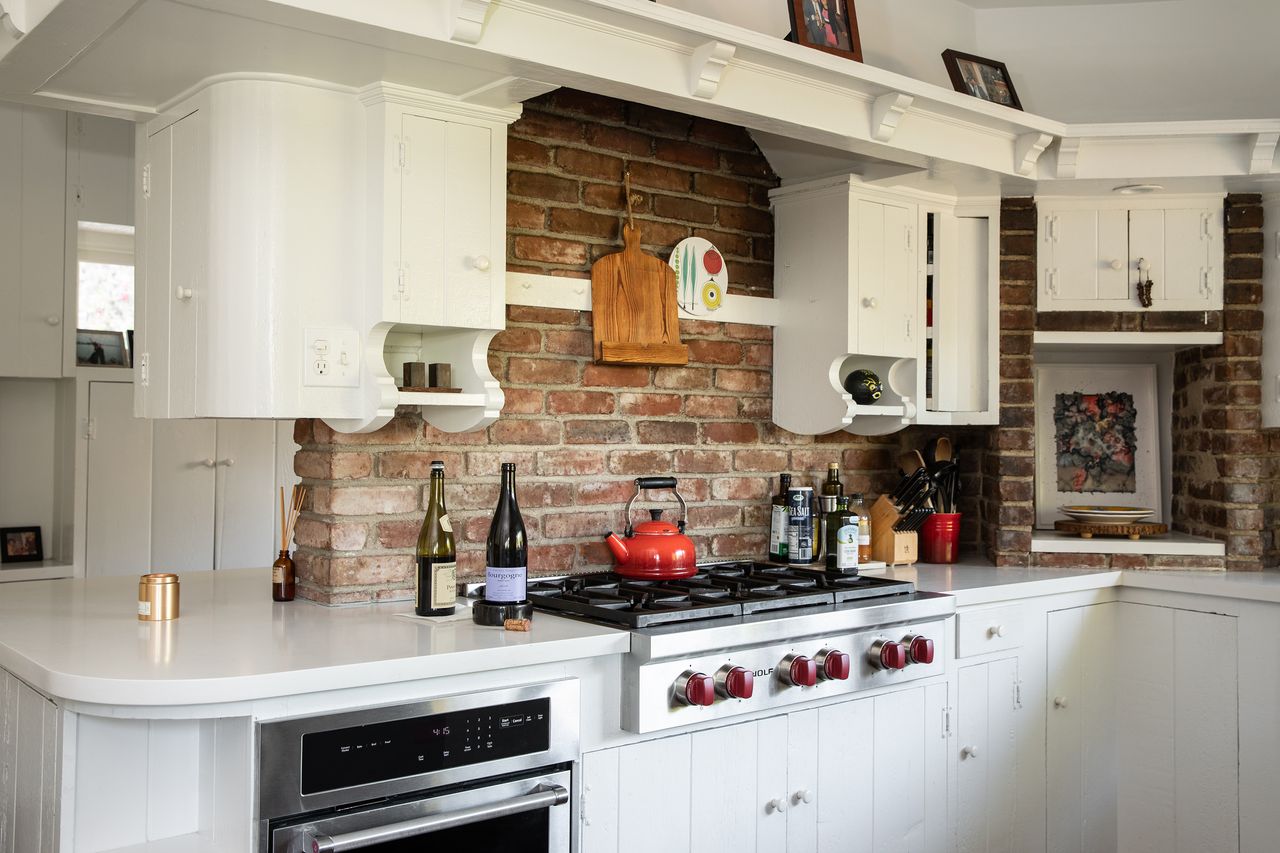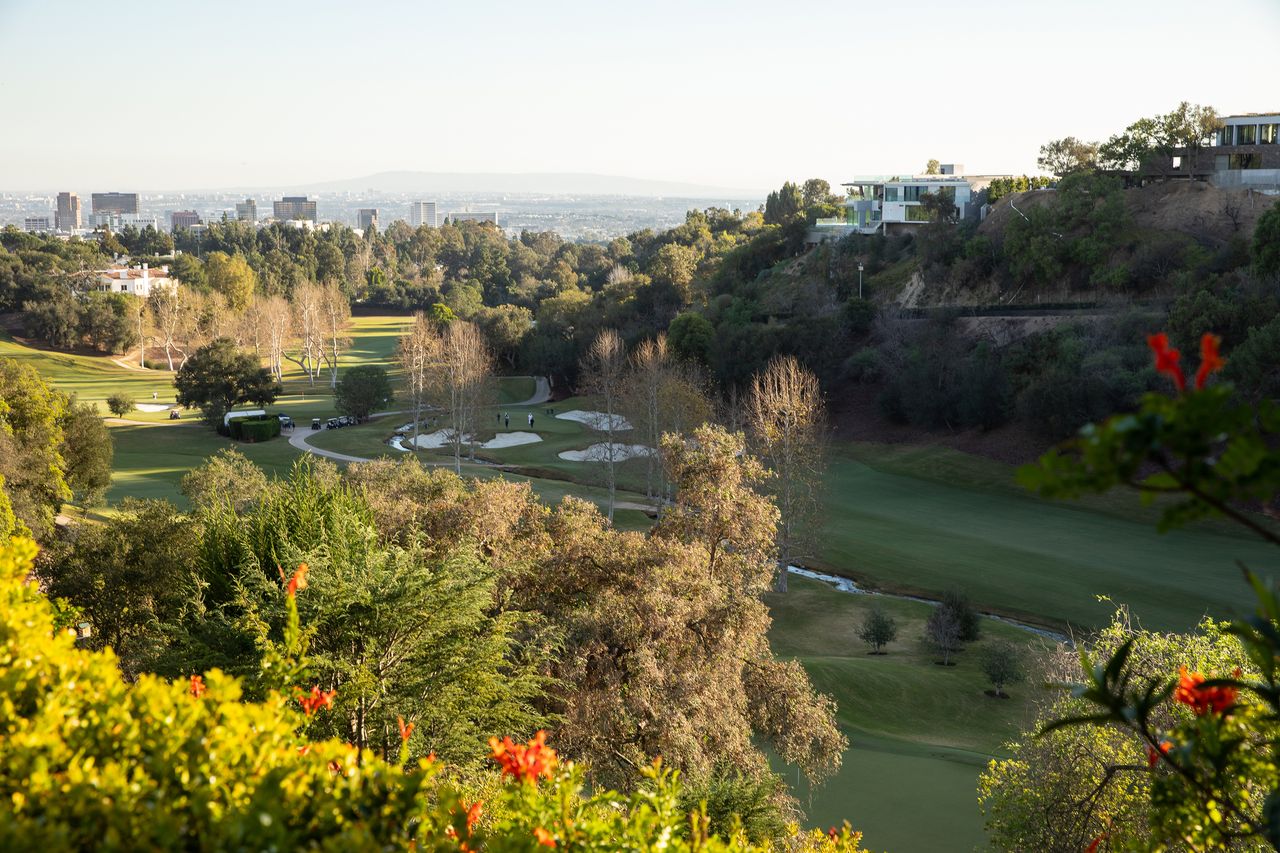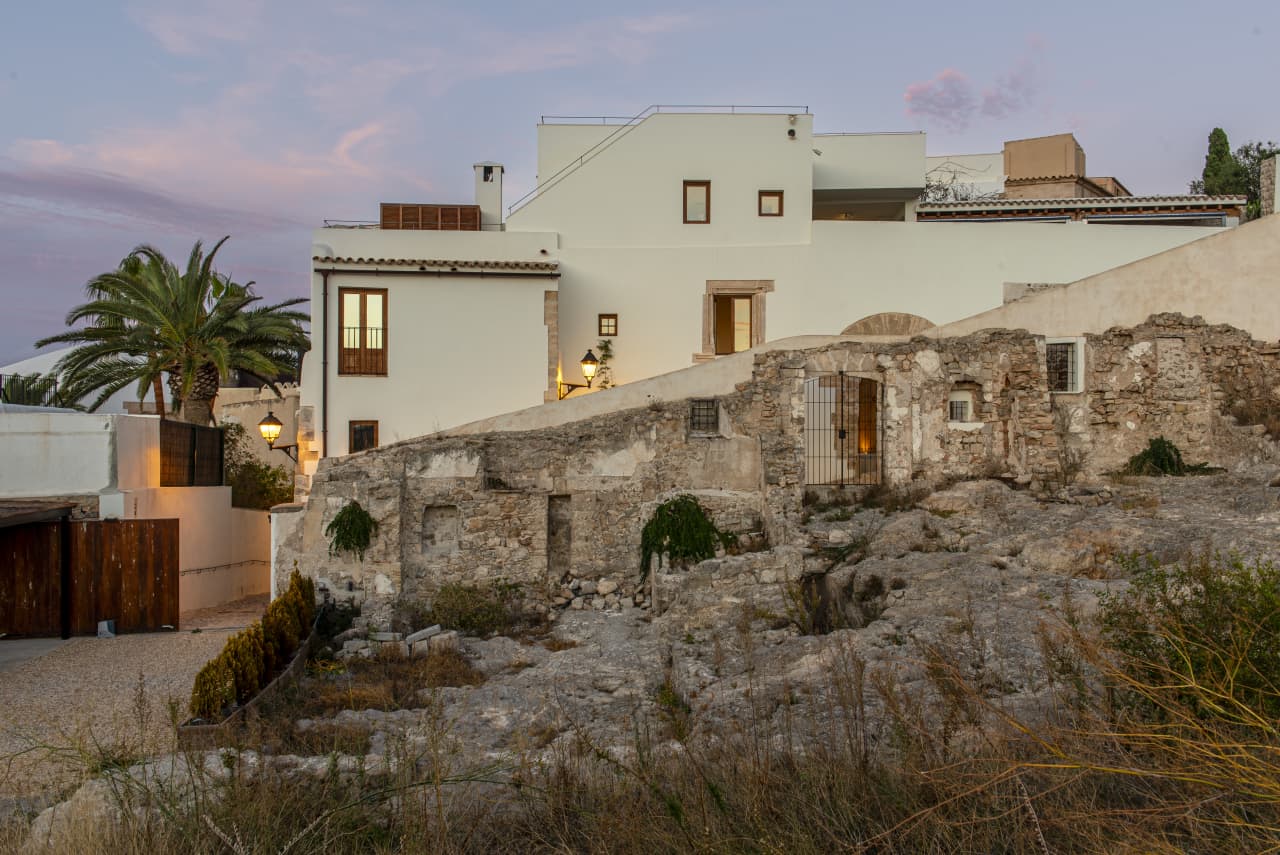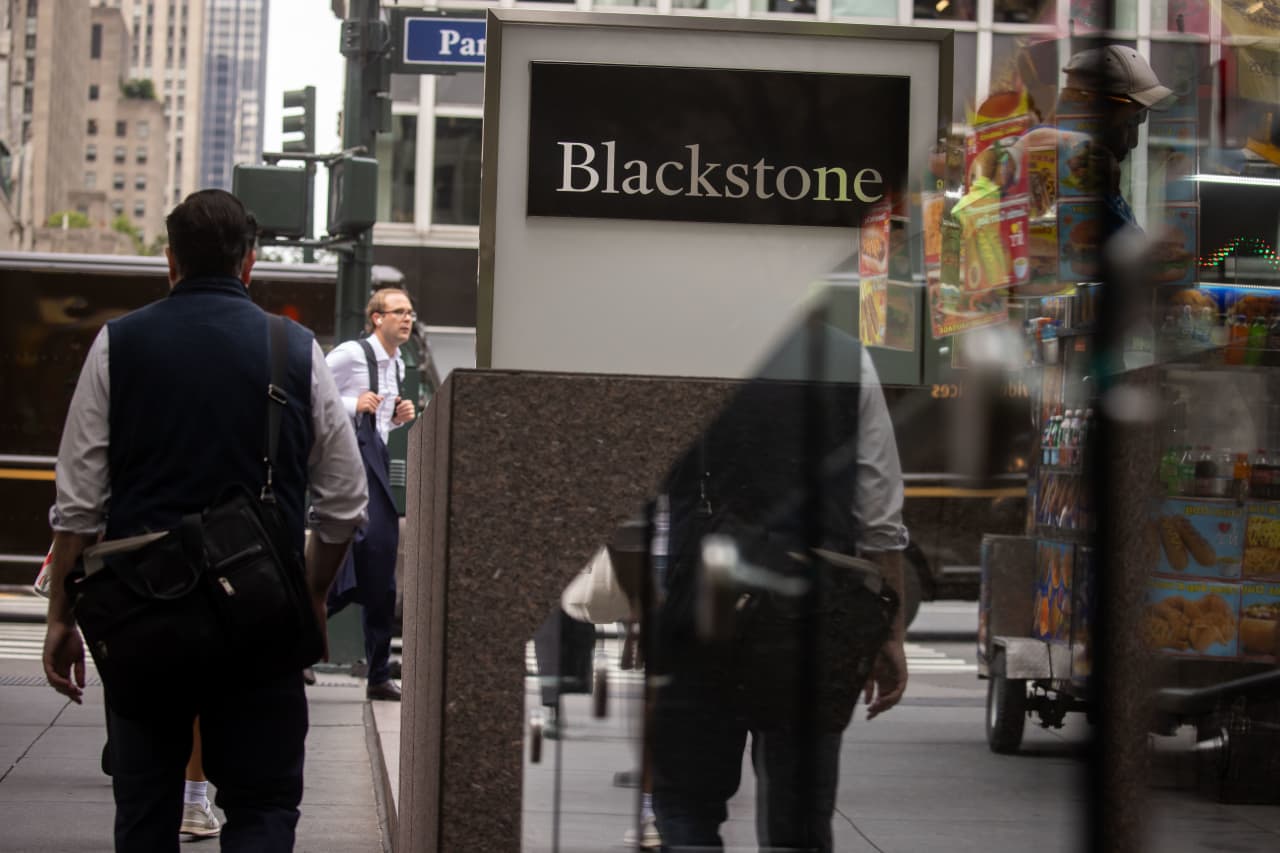Elon Musk Sells Gene Wilder’s Former Home Back To The Late Actor’s Family
Mr. Musk sold it to the new owner, the famed actor’s nephew, with the stipulation that the property be preserved.
Jordan Walker-Pearlman was heartbroken when he was told, erroneously, that the house where he grew up with his uncle, the late actor Gene Wilder, had been demolished.
He still had vivid memories—sometimes even dreams—of Mr. Wilder’s morning swims in the kidney-shaped pool, the Sunday after-tennis hangouts with the likes of Mel Brooks and Sidney Poitier, raucous dinner parties, and listening to Mr. Wilder read scripts and play piano while he nursed a Lillet cassis cocktail.
The low-slung, white-shingled house, in the Bel-Air neighbourhood of Los Angeles, was also where actress, comedian and “Saturday Night Live” cast member Gilda Radner died from ovarian cancer in 1989. Mr. Walker-Pearlman considered her a second mother after she married Mr. Wilder in 1984.
“I mourned the house,” says Mr. Walker-Pearlman, a 53-year-old film director and writer, who directed the 2000 film “The Visit” and whose wild hair and prominent, expressive eyes are similar to those of his late uncle, known for his work in “Willy Wonka & the Chocolate Factory” and “Blazing Saddles.” From an early age, Mr. Walker-Pearlman split his time between living with Mr. Wilder, and living with his grandmother in Harlem. His biological parents, he says, were “a little crazy and not enthusiastic about the responsibilities of child rearing.”
Then one day, when he was in the neighbourhood, Mr. Walker-Pearlman drove by to show his wife, screenwriter Elizabeth Hunter, where the house had been. He was shocked to find it still standing. Owned by tech billionaire Elon Musk, there was a large party under way, but the security guard opened the gate so they could peek in.
About a year later, a friend sent him a screenshot of Mr. Musk’s now-famous May 1, 2020, texts:
“I am selling almost all physical possessions. Will own no house” and “Just one stipulation on sale: I own Gene Wilder’s old house: It cannot be torn down or lose any of its soul.”
A US$9.5 million listing appeared on forsalebyowner.com, advertised as the “former home of Gene Wilder/Willy Wonka,” “upgraded with modern amenities, but preserved original charming and quirky vibe.” The listing stipulated that the home was being sold with the condition that it must be preserved.
Mr. Walker-Pearlman said he reached out to Mr. Musk’s team immediately. He knew he couldn’t afford that price, but the tweet gave him optimism they might reach a deal. “The only person who could possibly want it not to be torn down as much as him was me,” he says. Mr. Musk didn’t respond to a request for comment.
After four months of negotiations, Mr. Walker-Pearlman says Mr. Musk agreed to sell the house to him and Ms. Hunter for US$7 million along with what’s called a “long form deed of trust and assignment of rents,” in which Mr. Musk agreed to lend the couple $6.7 million, according to public documents.
“He could have sold it for so much more,” says Mr. Walker-Pearlman. “His sensitivity to me can’t be overstated.”
The sale closed in October 2020. The timing for Mr. Walker-Pearlman was exquisite, because it allowed him to use the house as the set for his upcoming film “The Requiem Boogie,” produced by his production company, Harlem, Hollywood. The somewhat autobiographical plot follows a middle-aged former child actor, played by Mr. Walker-Pearlman, who is mourning the loss of his movie-star father. It is a spiritual, quasi-comedy about dealing with Mr. Wilder’s death and the nature of show business, says Mr. Walker-Pearlman.
Living in the house again has been both wonderful and spooky, says Mr. Walker-Pearlman. He feels the ghosts of the people who made it come alive. When he walks into a certain room, a memory will pop up and he will get teleported back, he says. At times he even feels like messages from beyond are being sent, such as when the crew was filming in what was Ms. Radner’s dressing room and suddenly the water in the shower and sink came on.
When he and Ms. Hunter were signing the papers for the loan from Mr. Musk, a buck they had never seen before appeared from the hedges and stood in the window, staring at them, hanging around for nine hours that day; they haven’t seen it since. The couple’s 3-year-old nephew, Hunter, has told him there are ghosts in the house, he says.
The house came with many of Mr. Musk’s furnishings, including a purple sofa, a drawing of a clown, a large chess set and a swing encased in a giant metal birdcage in the backyard, which Mr. Walker-Pearlman says was a party gift to Mr. Musk.
Mr. Walker-Pearlman says he believes Mr. Musk originally bought the property to protect the distant views of Los Angeles and the Pacific Ocean from his primary house across the street, which Mr. Musk sold for $29.72 million to Chinese billionaire William Ding in June 2020, according to public records. He says he believes Mr. Musk used the garage as a school for his children at one point and the main house to hold parties. Mr. Musk didn’t respond to a request for comment.
Some things have changed since Mr. Wilder owned it: There used to be white shag carpet in the living room (a recommendation to his uncle from the late actor Burt Reynolds, says Mr. Walker-Pearlman); the main bathroom had a bath. Mr. Wilder’s much-used piano and a dart board are gone. The ceiling is now painted with black and white stripes and trees no longer block the view of the Bel-Air Country Club’s golf course below.
But much is the same. Mr. Walker-Pearlman still uses the indoor grill in the dining room where he says Mr. Wilder loved to cook chicken three times a week. He sits at the small kitchen desk, where he says Mr. Wilder would eat his morning bran muffins and drink Earl Grey tea. And he swims in the same pool where Mr. Wilder would do morning laps and where he taught Mr. Walker-Pearlman how to swim. Almost every wall and shelf contains memorabilia, including photographs of Mr. Wilder playing tennis, dressed as Willy Wonka.
Mr. Wilder, who was born Jerome Silberman, bought the 2,800-square-foot, five-bedroom, five-bathroom house in Bel-Air for around $300,000 in 1976, buoyed by the success of the 1974 film “Young Frankenstein,” in which he starred.
Mr. Walker-Pearlman had been living part time in Harlem with his grandmother, and part time with Mr. Wilder, who was his mother’s brother. He soon started spending all summer and time during a few other months in Los Angeles.
In L.A., Mr. Wilder gave him an education rich in the history of film, moviemaking and acting. He says he learned to process the world in terms of film, being hyper-aware of lighting and constantly wanting to change people’s dialogue. He started acting as a child and made and starred in his own film for Nickelodeon as a teenager. He also learned a lot about French red wines and the importance of romance, he says. “I didn’t leave his side.”
Ms. Radner urged Mr. Walker-Pearlman to try college, so he attended George Washington University and Howard University for stints. But she was also upset when he said he didn’t want to pursue an acting career. He says she told him “this house is for crazy people. You have to become one of us.”
The result was a mixed relationship with film. He says he learned to hate what he sees as the commodification and narcissism of the film industry, but he loved being in the editing suites and on set, especially during the filming of “Hanky Panky” in 1981, directed by Mr. Poitier, when Mr. Wilder and Ms. Radner met as co-stars.
In 1991, two years after Ms. Radner died, Mr. Wilder married his fourth wife, the former Karen Boyer. They eventually moved permanently to Ms. Radner’s former farmhouse in Stamford, Conn., where Mr. Wilder had been living much of the time after Ms. Radner’s death. He sold the Bel-Air house in 2007 for $2.7 million to Bristol Capital LLC. Mr. Musk bought it in 2013 for $6.75 million, according to PropertyShark.
Mr. Walker-Pearlman says he’s still mourning his uncle, who died in 2016 at age 83, and Ms. Radner. Living and filming in the house has triggered a range of emotions. “It’s the closest you can get to going back to the past,” he says. He worries that his wife pays a toll for that.
But Ms. Hunter says she’s thrilled to get the chance to live in such a beautiful house in a neighbourhood she never thought she would be able to afford. “It’s magic,” she says.
This stylish family home combines a classic palette and finishes with a flexible floorplan
Just 55 minutes from Sydney, make this your creative getaway located in the majestic Hawkesbury region.
As Paris makes its final preparations for the Olympic games, its residents are busy with their own—packing their suitcases, confirming their reservations, and getting out of town.
Worried about the hordes of crowds and overall chaos the Olympics could bring, Parisians are fleeing the city in droves and inundating resort cities around the country. Hotels and holiday rentals in some of France’s most popular vacation destinations—from the French Riviera in the south to the beaches of Normandy in the north—say they are expecting massive crowds this year in advance of the Olympics. The games will run from July 26-Aug. 1.
“It’s already a major holiday season for us, and beyond that, we have the Olympics,” says Stéphane Personeni, general manager of the Lily of the Valley hotel in Saint Tropez. “People began booking early this year.”
Personeni’s hotel typically has no issues filling its rooms each summer—by May of each year, the luxury hotel typically finds itself completely booked out for the months of July and August. But this year, the 53-room hotel began filling up for summer reservations in February.
“We told our regular guests that everything—hotels, apartments, villas—are going to be hard to find this summer,” Personeni says. His neighbours around Saint Tropez say they’re similarly booked up.
As of March, the online marketplace Gens de Confiance (“Trusted People”), saw a 50% increase in reservations from Parisians seeking vacation rentals outside the capital during the Olympics.
Already, August is a popular vacation time for the French. With a minimum of five weeks of vacation mandated by law, many decide to take the entire month off, renting out villas in beachside destinations for longer periods.
But beyond the typical August travel, the Olympics are having a real impact, says Bertille Marchal, a spokesperson for Gens de Confiance.
“We’ve seen nearly three times more reservations for the dates of the Olympics than the following two weeks,” Marchal says. “The increase is definitely linked to the Olympic Games.”

Getty Images
According to the site, the most sought-out vacation destinations are Morbihan and Loire-Atlantique, a seaside region in the northwest; le Var, a coastal area within the southeast of France along the Côte d’Azur; and the island of Corsica in the Mediterranean.
Meanwhile, the Olympics haven’t necessarily been a boon to foreign tourism in the country. Many tourists who might have otherwise come to France are avoiding it this year in favour of other European capitals. In Paris, demand for stays at high-end hotels has collapsed, with bookings down 50% in July compared to last year, according to UMIH Prestige, which represents hotels charging at least €800 ($865) a night for rooms.
Earlier this year, high-end restaurants and concierges said the Olympics might even be an opportunity to score a hard-get-seat at the city’s fine dining.
In the Occitanie region in southwest France, the overall number of reservations this summer hasn’t changed much from last year, says Vincent Gare, president of the regional tourism committee there.
“But looking further at the numbers, we do see an increase in the clientele coming from the Paris region,” Gare told Le Figaro, noting that the increase in reservations has fallen directly on the dates of the Olympic games.
Michel Barré, a retiree living in Paris’s Le Marais neighbourhood, is one of those opting for the beach rather than the opening ceremony. In January, he booked a stay in Normandy for two weeks.
“Even though it’s a major European capital, Paris is still a small city—it’s a massive effort to host all of these events,” Barré says. “The Olympics are going to be a mess.”
More than anything, he just wants some calm after an event-filled summer in Paris, which just before the Olympics experienced the drama of a snap election called by Macron.
“It’s been a hectic summer here,” he says.

AFP via Getty Images
Parisians—Barré included—feel that the city, by over-catering to its tourists, is driving out many residents.
Parts of the Seine—usually one of the most popular summertime hangout spots —have been closed off for weeks as the city installs bleachers and Olympics signage. In certain neighbourhoods, residents will need to scan a QR code with police to access their own apartments. And from the Olympics to Sept. 8, Paris is nearly doubling the price of transit tickets from €2.15 to €4 per ride.
The city’s clear willingness to capitalise on its tourists has motivated some residents to do the same. In March, the number of active Airbnb listings in Paris reached an all-time high as hosts rushed to list their apartments. Listings grew 40% from the same time last year, according to the company.
With their regular clients taking off, Parisian restaurants and merchants are complaining that business is down.
“Are there any Parisians left in Paris?” Alaine Fontaine, president of the restaurant industry association, told the radio station Franceinfo on Sunday. “For the last three weeks, there haven’t been any here.”
Still, for all the talk of those leaving, there are plenty who have decided to stick around.
Jay Swanson, an American expat and YouTuber, can’t imagine leaving during the Olympics—he secured his tickets to see ping pong and volleyball last year. He’s also less concerned about the crowds and road closures than others, having just put together a series of videos explaining how to navigate Paris during the games.
“It’s been 100 years since the Games came to Paris; when else will we get a chance to host the world like this?” Swanson says. “So many Parisians are leaving and tourism is down, so not only will it be quiet but the only people left will be here for a party.”
This stylish family home combines a classic palette and finishes with a flexible floorplan
Just 55 minutes from Sydney, make this your creative getaway located in the majestic Hawkesbury region.









